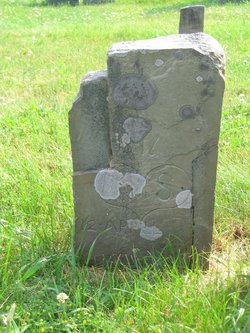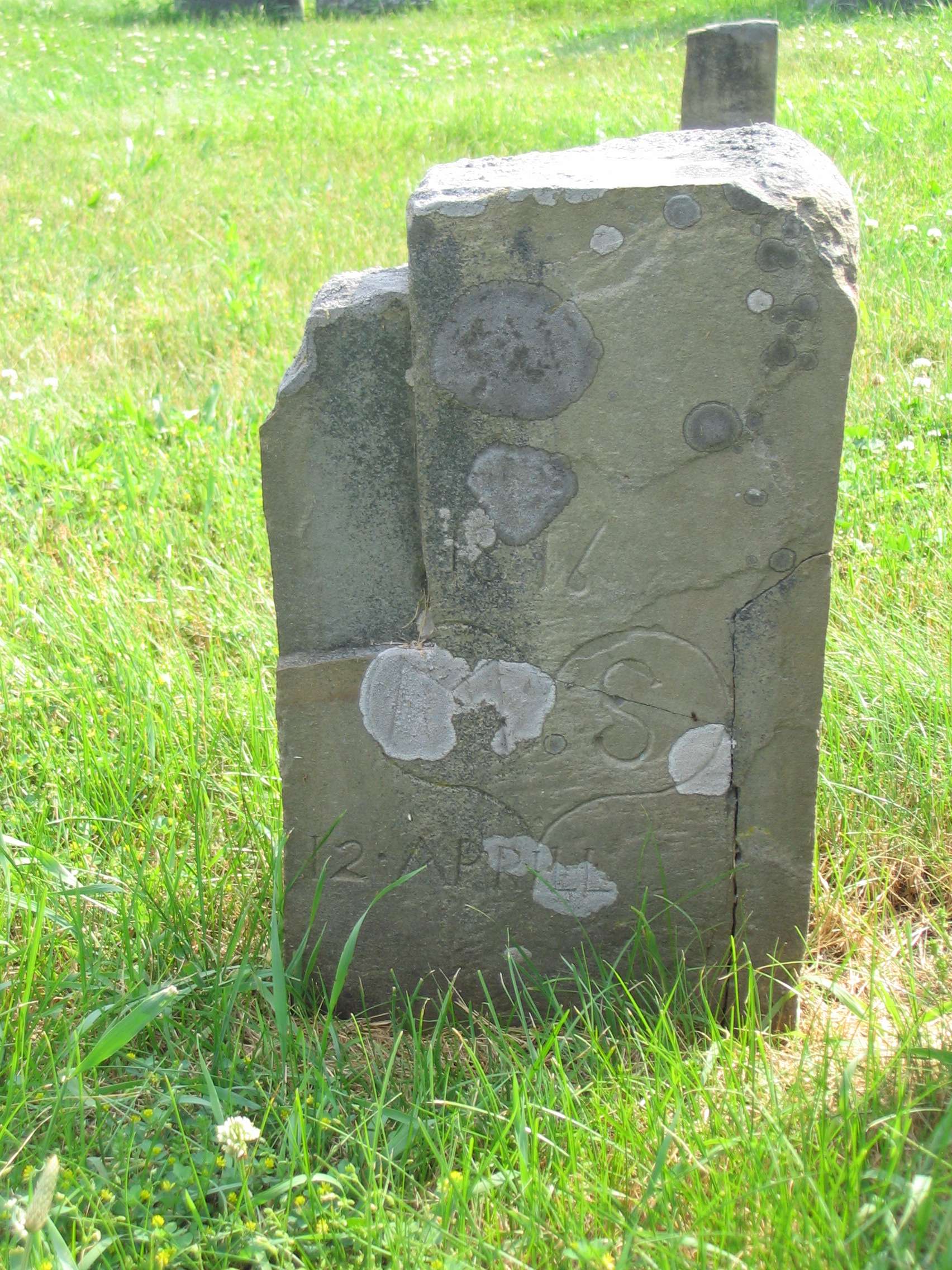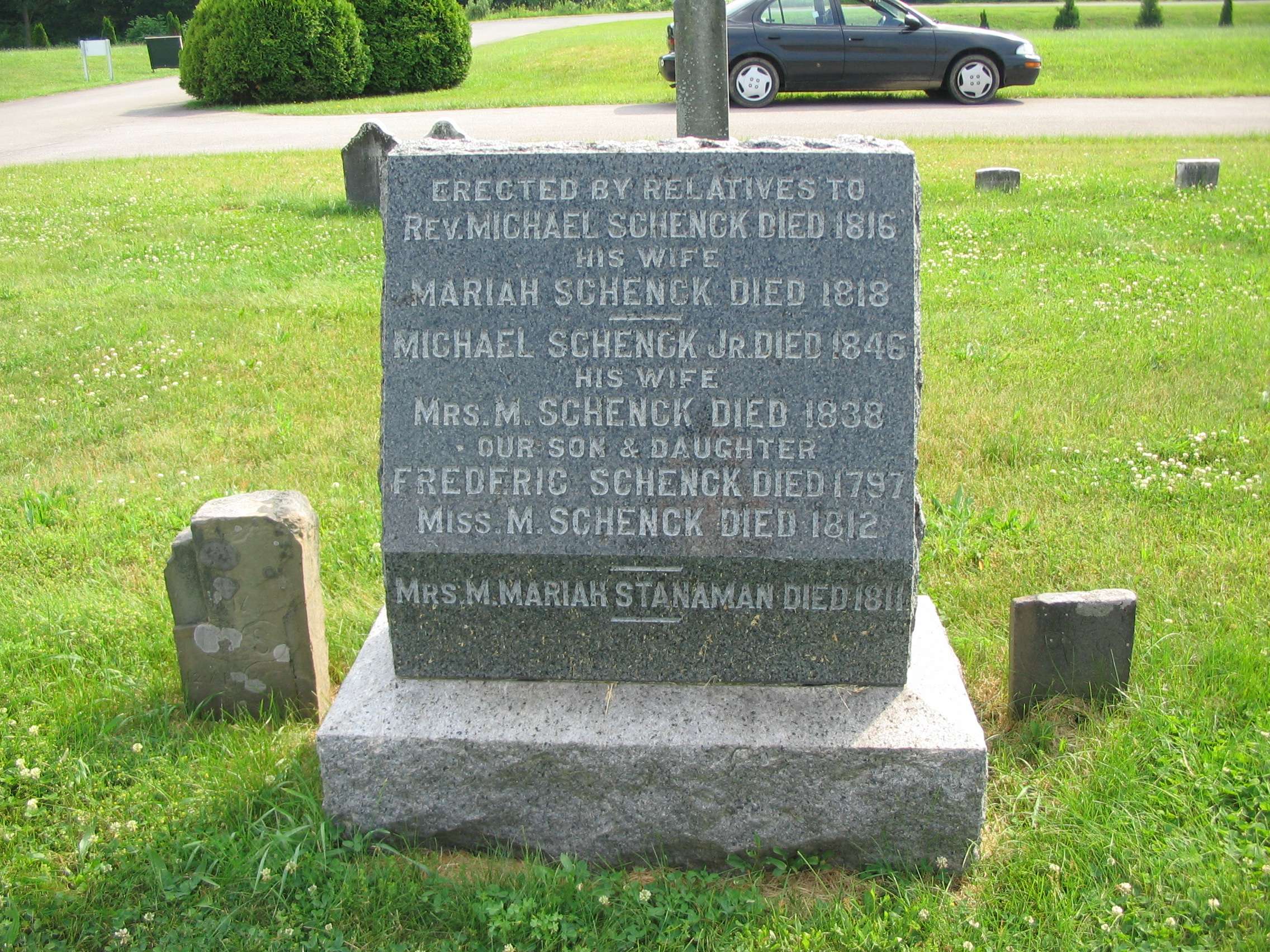He was truly a man of his convictions. He was the spiritual leader for the early Mennonite congregation in the Bald Eagle Valley.
In the fall of 1796 he moved his family, including married son Michael and his family, from Conestoga Township in Lancaster County to the Bald Eagle Valley in Centre County. Other related families that joined in this migration from Lancaster County include the Pletchers, Neffs, and Nestlerodes. Their likely route of travel would have been on the road on the eastern side of the Susquehanna River to the mouth of the Juniata River. Crossing of the Susquehanna would have been by ferry and from there they would have followed the Juniata to the area of the town of Water Street in Huntingdon County. There they probably headed northeast on established Native trails through Warriors Mark and up the Bald Eagle Valley to what is now Howard Township in Centre County.
Here the Schenck family intermarried with the Pletchers, Holters, Bechdels, Leathers, and others. His descendants first held a centennial reunion in 1896 to commemorate their settlement in the area. This reunion is still held on the second Saturday in August of even-numbered years in Schenck's Grove in Bald Eagle State Park, once the family farm. As a Mennonite he would not have called himself Reverend, but many of his descendants made that designation to differentiate him from his many descendants of the same name.
Father of:
Frederick m. Susanna Bechdel
Michael, Jr. m. Mariah Sterneman
Anna m. 1. Henry Pletcher
2. Samuel Pletcher, Jr.
John m. Esther Hess
Barbara m. David Bechdel
Rudolph m. Susan Doner
Magdalena "Molly" m. Henry Pletcher, Jr.
Daniel m. 1. Elizabeth Fox 2. Catherine Mellot
------------------------------------
No roads went past or through the Henry Pletcher or Michael Schenck's properties, which were adjoining each other. The Bald Eagle Creek was declared a public highway from the Susquehanna River to Milesburgh by state authorities on March 9, 1771. In August 1795 the Mifflin County court appointed viewers to lay out a road from the mouth of Beech Creek to Milesburg. The road eventually became part of U. S. 220. From Blanchard to Michael Schenck's place, it closely followed the Indian path sometimes called the ”warrior’s path.”
Within a few years after Michael Schenck settled in Centre County, his farm became a hub of community activity and earned the temporary name of Schenckville, which was sometimes called Germantown. It also served as the hub for the Mennonite people of the area.
Mennonite religious services apparently were held in homes and no doubt rotated among the Schenck, Pletcher, Holter and other families. The meeting house was not erected until 1812 on land owned by Jacob and Anna Pletcher, a son of Henry's. The church was located about one-half mile east of the town of Howard and seventy-five feet north of the main road leading to Blanchard.
It was a structure built of sizable logs and measuring fourteen by twenty-four or twenty-eight feet, with an entrance from the west. It has a pair of small windows on each side with unpainted shutters and a wood-shingled roof. It was a typical plain Mennonite meeting house unadorned by belfry or steeple. A 1821 deed named Frederick Schenck as a trustee for the church. This probably happened because the church was on land owned by Jacob Pletcher, who moved to Ohio about this same time.
Members of the early congregation lived as far away as Houserville, in Buffalo Run Valley, and some near Unionville, and possibly north of Howard. Mennonite churches did not keep accurate records before 1900. They had come to this land because of religious persecution so they were careful about members' names. However, locals remember such family names as Helman, Shereck, Bower, Holter, Houser, Schenck, and Pletcher.
The members of this congregation were noted for their hospitality and benevolence, always ready to assist the needy and afflicted. Their religious teachings included industry, peace, piety and virtue. The ministers of the congregation were selected from the members of the society by lot, and received no pay for their religious teachings. Samuel Pletcher was the first minister selected, followed by Daniel Kunes, Michael Schenck, Frederick, John Pletcher and Henry Holter, who died in 1857. There were no regular services after that date. (pages 57-58 ) "The Peddlers Legacy- Life of Balser Weber " written by Etta Lyons Buchwald in 2000. Available at the Mennonite Historical Society Library in Lancaster, PA or the Centre County Gen Society Library in Bellefonte, PA
Contributor: Etta Lyons Buchwald (48374005)
He was truly a man of his convictions. He was the spiritual leader for the early Mennonite congregation in the Bald Eagle Valley.
In the fall of 1796 he moved his family, including married son Michael and his family, from Conestoga Township in Lancaster County to the Bald Eagle Valley in Centre County. Other related families that joined in this migration from Lancaster County include the Pletchers, Neffs, and Nestlerodes. Their likely route of travel would have been on the road on the eastern side of the Susquehanna River to the mouth of the Juniata River. Crossing of the Susquehanna would have been by ferry and from there they would have followed the Juniata to the area of the town of Water Street in Huntingdon County. There they probably headed northeast on established Native trails through Warriors Mark and up the Bald Eagle Valley to what is now Howard Township in Centre County.
Here the Schenck family intermarried with the Pletchers, Holters, Bechdels, Leathers, and others. His descendants first held a centennial reunion in 1896 to commemorate their settlement in the area. This reunion is still held on the second Saturday in August of even-numbered years in Schenck's Grove in Bald Eagle State Park, once the family farm. As a Mennonite he would not have called himself Reverend, but many of his descendants made that designation to differentiate him from his many descendants of the same name.
Father of:
Frederick m. Susanna Bechdel
Michael, Jr. m. Mariah Sterneman
Anna m. 1. Henry Pletcher
2. Samuel Pletcher, Jr.
John m. Esther Hess
Barbara m. David Bechdel
Rudolph m. Susan Doner
Magdalena "Molly" m. Henry Pletcher, Jr.
Daniel m. 1. Elizabeth Fox 2. Catherine Mellot
------------------------------------
No roads went past or through the Henry Pletcher or Michael Schenck's properties, which were adjoining each other. The Bald Eagle Creek was declared a public highway from the Susquehanna River to Milesburgh by state authorities on March 9, 1771. In August 1795 the Mifflin County court appointed viewers to lay out a road from the mouth of Beech Creek to Milesburg. The road eventually became part of U. S. 220. From Blanchard to Michael Schenck's place, it closely followed the Indian path sometimes called the ”warrior’s path.”
Within a few years after Michael Schenck settled in Centre County, his farm became a hub of community activity and earned the temporary name of Schenckville, which was sometimes called Germantown. It also served as the hub for the Mennonite people of the area.
Mennonite religious services apparently were held in homes and no doubt rotated among the Schenck, Pletcher, Holter and other families. The meeting house was not erected until 1812 on land owned by Jacob and Anna Pletcher, a son of Henry's. The church was located about one-half mile east of the town of Howard and seventy-five feet north of the main road leading to Blanchard.
It was a structure built of sizable logs and measuring fourteen by twenty-four or twenty-eight feet, with an entrance from the west. It has a pair of small windows on each side with unpainted shutters and a wood-shingled roof. It was a typical plain Mennonite meeting house unadorned by belfry or steeple. A 1821 deed named Frederick Schenck as a trustee for the church. This probably happened because the church was on land owned by Jacob Pletcher, who moved to Ohio about this same time.
Members of the early congregation lived as far away as Houserville, in Buffalo Run Valley, and some near Unionville, and possibly north of Howard. Mennonite churches did not keep accurate records before 1900. They had come to this land because of religious persecution so they were careful about members' names. However, locals remember such family names as Helman, Shereck, Bower, Holter, Houser, Schenck, and Pletcher.
The members of this congregation were noted for their hospitality and benevolence, always ready to assist the needy and afflicted. Their religious teachings included industry, peace, piety and virtue. The ministers of the congregation were selected from the members of the society by lot, and received no pay for their religious teachings. Samuel Pletcher was the first minister selected, followed by Daniel Kunes, Michael Schenck, Frederick, John Pletcher and Henry Holter, who died in 1857. There were no regular services after that date. (pages 57-58 ) "The Peddlers Legacy- Life of Balser Weber " written by Etta Lyons Buchwald in 2000. Available at the Mennonite Historical Society Library in Lancaster, PA or the Centre County Gen Society Library in Bellefonte, PA
Contributor: Etta Lyons Buchwald (48374005)
Inscription
On original fieldstone marker:
1816
M S (within a heart shape)
12 Aprill
Family Members
Advertisement
Records on Ancestry
Advertisement











